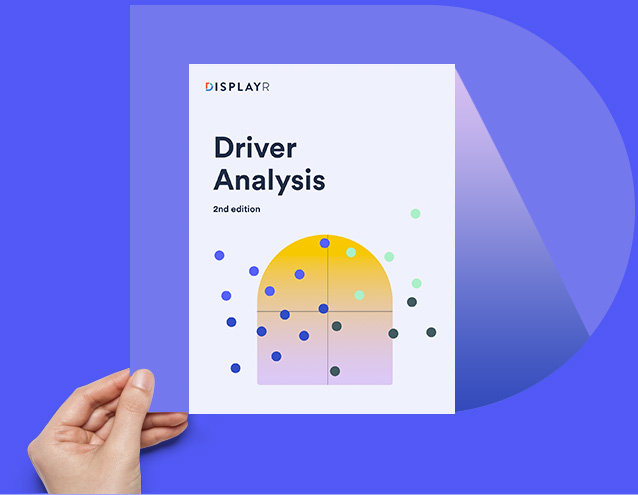Driver Analysis never fails to give an “AHA” moment. Learn to uncover which attributes have the biggest impact on consumer behavior. Driver analysis is an application of regression analysis, where the outcome is a measure of the performance of one or more brands, and the predictors are measurements of the performance of brand attributes. This eBook will explain all the key steps needed for you to perform your own driver analyses. You will learn which techniques to use and when you should use them (e.g., Shapley, Kruskal, OLS, robust standard errors).
What you'll get from this eBook
This eBook walks through a 10-step process for performing driver analysis, which includes:
- Data preparation
- Choosing the appropriate technique
- Missing data
- Model checking
- Data visualization
Learn how to answer important questions like:
- What drives product preference?
- Why is satisfaction high or low?
- What are the predictors of consumption?
More about this eBook
Which area of your brand’s performance should you concentrate on improving? Should you be focusing on customer service or price? Should you position your brand as cool or competent? These are the questions answered by driver analysis.
Driver analysis, which is also known as key driver analysis, importance analysis, and relative importance analysis, uses the data from questions like these to work out the relative importance of each of the predictor variables in predicting the outcome variable. Each of the predictors is commonly referred to as a driver. The goal is to quantify the importance of each of the drivers. That is, the goal is to compute importance scores, so that we can work out which drivers are key. Importance scores are sometimes referred to as importance weights.
The key output from driver analysis is typically a table or chart showing the relative importance of the different drivers (predictors). Whereas the focus in much of data science is on prediction, with driver analysis the focus is instead on identifying the relative importance of the predictors (drivers).
Basic process for Driver Analysis:
1. Code the outcome variable from worst to best
2. Code the predictor variables from worst to
3. (Optional) Stacking or auto-stacking data
4. Select an appropriate GLM
5. Review the signs of the GLM’s coefficients
6. Use Shapley regression or Johnson’s relative weights
7.Select an appropriate technique for missing values
8. Check sensitivity to outliers
9. (Linear GLMs only) Use a robust variance estimate or weight
10. Data visualization
Read more
Get started today


